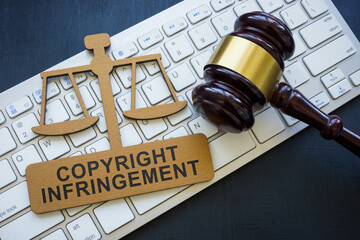Intellectual property is a broad and complex field that encompasses various forms of legal protection for creations of the human intellect. Among the main forms of intellectual property are patents, trademarks, and copyrights. Each of these forms protects different types of creations and offers various rights and benefits to their holders. Below, we will explore the key differences between patents, trademarks, and copyrights, providing a clear understanding of each.

Patents
Patents are exclusive rights granted by the government to inventors to protect their inventions. A patent grants the holder the right to exclude others from making, using, selling, or importing the patented invention for a limited period, generally 20 years from the filing date of the patent application.
Types of Patents
There are several types of patents, including:
- Utility Patents: Protect new and useful inventions, whether products, processes, machines, or compositions of matter.
- Design Patents: Protect new, original, and ornamental designs for manufactured items.
- Plant Patents: Protect new varieties of plants that have been asexually reproduced.

Requirements for Obtaining a Patent
To obtain a patent, an invention must meet certain requirements:
- Novelty: The invention must be new and not have been disclosed previously anywhere in the world.
- Inventive Step: The invention must not be obvious to someone with knowledge and skills in the relevant field.
- Industrial Applicability: The invention must be capable of industrial application, meaning it must have some practical use.
Trademarks
Trademarks are distinctive signs that identify and distinguish the products or services of a company from those of others. A trademark can consist of words, names, symbols, logos, colors, sounds, or a combination of these. The protection of trademarks aims to prevent consumer confusion and ensure the quality and origin of products and services.

Functions of Trademarks
Trademarks serve several important functions:
- Identification of Origin: Indicate the source or manufacturer of a product or service.
- Quality Assurance: Signify a consistent level of quality associated with the marked products or services.
- Advertising and Promotion: Facilitate the marketing and promotion of products or services.
- Protection Against Unfair Competition: Help prevent consumer confusion and unauthorized use of distinctive signs.
Trademark Registration Process
To register a trademark, an application must be submitted to the relevant trademark office, providing a detailed description of the trademark and the products or services to be protected. Once registered, trademark protection can last indefinitely, provided it is renewed periodically and maintained in use.
Copyrights
Copyrights are exclusive rights granted to creators of original works of authorship, such as books, music, movies, photographs, software, and artworks. Unlike patents and trademarks, which protect inventions and distinctive signs respectively, copyrights protect the creative expression of ideas.
Scope of Copyrights
Copyrights grant holders several exclusive rights, including:
- Reproduction Right: The right to reproduce the work in any form or medium.
- Distribution Right: The right to distribute copies of the work to the public.
- Public Performance Right: The right to communicate the work to the public, for example, by broadcasting or public performance.
- Modification Right: The right to create derivative works based on the original work.

Duration of Copyrights
The duration of copyrights varies by jurisdiction but generally lasts for the life of the author plus an additional period of 50 to 70 years after their death. In some cases, such as works made for hire or by employees in the course of their work, the duration may be different.
Comparison and Key Differences
Nature of Protection
- Patents: Protect technical inventions and offer exclusive rights to exploit the invention.
- Trademarks: Protect distinctive signs used in commerce to identify products and services.
- Copyrights: Protect the creative expression of ideas in the form of original works of authorship.
Registration Requirements
- Patents: Require a formal application and demonstration of novelty, inventive step, and industrial applicability.
- Trademarks: Require a formal application and demonstration that the mark is distinctive and not confusingly similar to existing marks.
- Copyrights: Generally do not require formal registration (although registration can offer additional benefits) and are automatically granted upon creation of an original work.
Duration of Protection
- Patents: Generally last 20 years from the filing date of the application.
- Trademarks: Can last indefinitely, provided they are renewed and maintained in use.
- Copyrights: Generally last the life of the author plus 50 to 70 years, depending on the jurisdiction.

Examples of Application
- Patents: A new machine, an innovative manufacturing process, a novel chemical composition.
- Trademarks: A company logo, a distinctive brand name, an advertising slogan.
- Copyrights: A book, a song, a movie, a painting, software.
 Employeer and business Information about Employeers, plataforms and works
Employeer and business Information about Employeers, plataforms and works 



